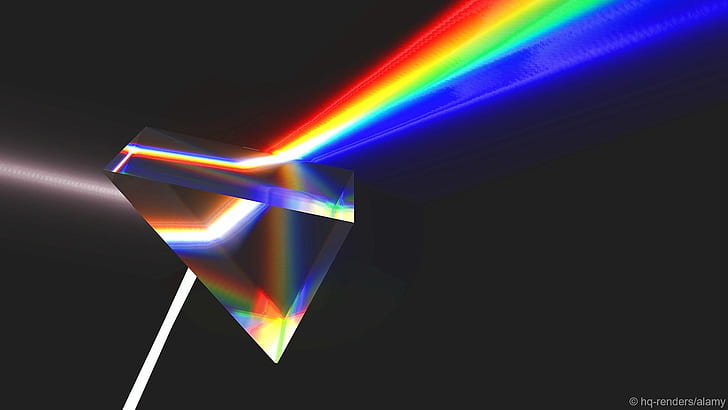

Also noting that separate colours are not shown inside the prism. Left prism: Noting that it'll look the same whether (a) the coherent white light beam enters the prism from the left, or (b) the many beams enter from the right. Re the album artwork, I reckon the prism on the right is almost correct, but the one on the left is incorrect. Which of the two prism optics pictured above is correct? Or are they both correct? Or neither one? Given that the result (white ray) should be the same, this contradicts with the rule, doesn't it?Ĭan color rays that are diverging towards a prism really be recombined to a white ray in the prism on the left? According to this rule, there's a problem in the image, because on one prism, the rays are diverging towards it, while on the other, they are converging towards it. There's a rule in optics that rays have no direction and could be considered coming from either direction.

However, the rays are diverging towards the prism on the left and are also diverging from the prism on the right. On both prisms, red and white have the least acute angle. On this one, the angles of the individual colored rays are still diverging, because there's no additional lens involved changing that. After a bit of googling I found the original cover art with both sides here: I'm embarrassed to admit that I do not own the album myself in a form that includes the entire cover. On the right, ("inverse" operation) it's exactly the opposite: here, red and white have the most acute angleĬould the rays that hit the right prism in that way really come out as one white ray? On the left, (original cover art) the angle between the white ray and the purple ray is the most acute angle The problem I see is that the angles don't work out. Now this is just a comic and I'm not sure if correctness of the optics was a major goal, but I still wonder if this would actually work. Can't we have a change? A cool graphic - something smart, tidy, elegant.In xkcd # 964 "Dorm Poster", the cover art from dark side of the moon is "completed" with another poster that performs the inverse action:Ī lens is used to turn the diverging color rays from the first prism into converging ones. "He said, somewhat provocatively, 'Let's not have one of your photos, we've had your photos before. The idea was sparked by Pink Floyd's keyboard player, the late Richard Wright, he explained. I would like to claim it, but unfortunately it's not mine." Refracting light through a prism is a common feature in nature, as in a rainbow. He told the BBC in 2009: "It's a nice but simple idea. "He has been a constant force in my life, both at work and in private, a shoulder to cry on and a great friend. We would gather at Sheep's Green, a spot by the river in Cambridge and Storm would always be there holding forth, making the most noise, bursting with ideas and enthusiasm. He said: "We first met in our early teens. Pink Floyd guitarist and vocalist Dave Gilmour said the artworks Thorgerson created for the band had been "an inseparable part of our work". "He is survived by his mother Vanji, his son Bill, his wife Barbie Antonis and her two children Adam and Georgia." "He had been ill for some time with cancer though he had made a remarkable recovery from his stroke in 2003," it said. His family released a statement saying he died peacefully on Thursday surrounded by family and friends. He also created the mournful-looking cow on the front of Atom Heart Mother, the burning businessman on the sleeve of Wish You Were Here and the giant pig flying over Battersea Power Station. Thorgerson most-famously designed the prism spreading a spectrum of colour across The Dark Side Of The Moon. He had been a childhood friend of the band members and became their designer-in-chief as well as making album covers for Led Zeppelin, Peter Gabriel and Muse. The graphic designer was responsible for the artwork that graced Pink Floyd's The Dark Side of the Moon. STORM THORGERSON, who designed one of the most famous album covers of all time, has died aged 70.


 0 kommentar(er)
0 kommentar(er)
